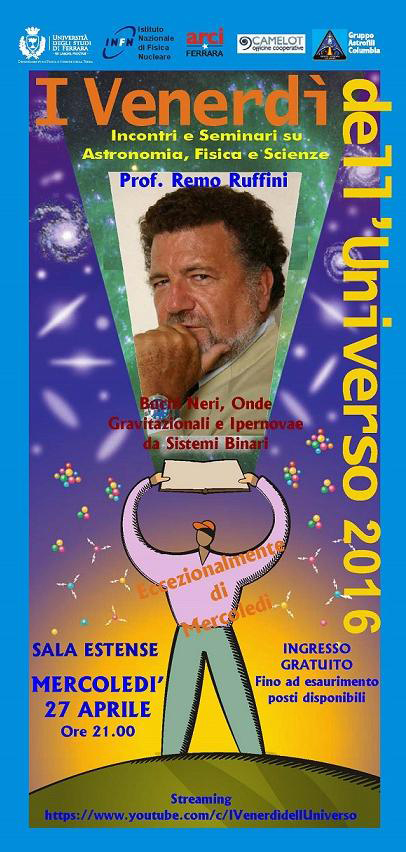

| Newsletter English February/April |

|

|





ICRANet Newsletter
2014 -
2015
2016 May/June - July/Semptember - October/November - December/January 2017 - 2018 - 2019
ICRANet Newsletter
February - April 2016
SUMMARY
1. ICRANet Steering Committee meeting 2. Visit of Iranian deputy-minister of Science to ICRANet 3. Visit of ICRANet director, Prof. Ruffini, to ICTP and TWAS in Trieste 4. Visit of ICRANet director, Prof. Ruffini, to Yerevan 5. New cooperation agreements 6. Public lecture of Prof. Ruffini in Ferrara 7. Forth Bego Rencontres - IRAP Ph.D. Erasmus Mundus school 8. "Supernovae, Hypernovae and Binary Driven hyper novae" an Adriatic Meeting 9. ICRANet Youtube channel 10. Recent publications 11. New Ph.D Thesis discussion and Diploma
1. ICRANet Steering Committee meeting

On the 1st of February 2016 the 14th Steering Committee of ICRANet took place. The following members were present: Prof. Felix Aharonian with the proxy of Prof. Harutyunian Haik A. (Representative of Armenia), Secr. Luiz Felipe Czarnobai on behalf of Min. Ademar Seabra Da Cruz Junior (Representative of Brazil), Min. Plen. Roberto Cantone (DGSP Representative of the Italian Ministry of Foreign Affairs and International Cooperation - Italy), Prof.ssa Immacolata Pannone (DGSP Representative of the Italian Ministry of Foreign Affairs and International Cooperation - Italy), Dr. Antonio Bartolini (General Government Accountancy IGAE Uff. IX - Representative of Ministry of Economy), Dr. Giulietta Iorio on behalf of dr. Vincenzo Di Felice (Representative of Ministry of Education, Universities and Research), Prof. Carlo Luciano Bianco with the proxy of Prof. Remo Ruffini (Representative of ICRA and Director of ICRANet), Prof. Xiaohui Fan (Representative of the University of Arizona in Tucson), Prof. C. W. Francis Everitt (Chairman) Representative of Stanford University), Ing. Carlo Pace (for the Mayor of Representative of the Municipality of Pescara for the Mayor, Avv. Marco Alessandrini). In addition ICRANet Auditors were present: Pres. Ennio Colasanti (President Section Controls to European and International Affairs, Italian Court of Auditors) and Cons. dr. Giacinto Dammicco (Advisor, Italian Court of Auditors). Participated as observer also Dr. Piero Redolfi (Accounting consultant).
2. Visit of Iranian deputy minister of research to ICRANet

From left to right: prof. Mansouri, prof. Ruffini, prof. Ahmadi and prof. Rahighi at Sapienza University, in front of the Physics Department. On March 12 a delegation composed by representatives of the Iranian Government and scientists, Prof. Vahid Ahmadi, Prof. Javad Rahighi and Prof. Reza Mansouri, has visited ICRANet and had a meeting with the Director of ICRANet, Prof. Remo Ruffini. The aim of this visit was to discuss agreements with selected Iranian universities active in the field of Relativistic Astrophysics, and planning joint research activities, receive students in the International Relativistic Astrophysics PhD Program, the IRAP PhD, as well as to discuss the entrance of Iran into ICRANet as a Member state. Prof. Vahid Ahmadi, Professor of Electronic Engineering (Optoelectronics) at Tarbiat Modares University, Tehran: he is Deputy Minister for Research & Technology at Ministry of Science, Research and Technology (MSRT) of Iran. Prof. Javad Rahighi, Director of the Iranian Light Source Facility (ILSF), Chair of Training Advisory Committee at the Synchrotron-Light for Experimental Science and Applications in the Middle East (SESAME), and professor of Experimental Physics at the School of Particles and Accelerators, Institute for Research in Fundamental Sciences (IPM) in Tehran. Prof. Reza Mansouri (Sharif University of Technology, Teheran, Iran) has been the Deputy Minister of Science of Iran from 2001 to 2005 and the president of The Physical Society of Iran. He is one of the founders of Institute for Studies in Theoretical Physics and Mathematics (IPM). He is responsible for Iran's 3.4 meter national telescope (INO340). He has been awarded Abdus Salam prize. He visited ICRANet Pescara center already in July 2015 and presented a talk at the 14th Italo-Korean symposium on Relativistic Astrophysics with the title "Do we know what a black hole is? A conceptual refinement". 
From left to right: prof. Mansouri, prof. Ahmadi, Dr. Vereshchagin, prof. Rahighi and prof. Ruffini at ICRANet.
3. Visit of ICRANet director, Prof. Ruffini to ICTP and TWAS in Trieste
On January 30, 2016 the Executive director of TWAS Prof. Murenzi, visited ICRANet in Pescara and delivered a lecture titled "The legacy of Abdus Salam and TWAS". Following this visit on February 16, 2016 ICRANet director, Prof. Ruffini, visited ICTP and TWAS in Trieste and had a meeting with Prof. Chunli Bai, the President of TWAS and Chinese Academy of Sciences (CAS). They discussed ongoing cooperation between ICRANet and CAS and possible association of the University of Chinese Academy of Sciences (UCAS) and University of Science and Technology of China (USTC) to the IRAP PhD program. The USTC was discussed as a possible host for the 5th Galileo-Xu Guangqi Meeting to be held in 2017. Beijing was considered as a possible location for the next Marcel Grossmann Meeting, the MG15 in 2018.
In order to foster this cooperation a Memorandum of Understanding has been proposed. 
4. Visit of ICRANet director, Prof. Ruffini to Yerevan
On March 18 the Director of ICRANet, Prof. Ruffini, visited the ICRANet center in Yerevan. During his visit he met: Prof. Samvel Haroutiunian, chairman of the State Committee of Science, Prof. Radik Martirosyan, President of the National Academy of Sciences, Ms. Satenik Abgarian from the Ministry of Foreign Affairs, the new representative of Armenia in the ICRANet Governing Board, Giovanni Ricciulli, the Ambassador of Italy in Armenia, and Edson Marinho Duarte Monteiro, the Ambassador of Brazil in Armenia. During the meetings, not only the activities of ICRANet in Armenia were discussed but also the ICRANet activity in the regional countries. In particular, the local authorities supported the idea to invite Iran to join ICRANet.
After the meetings Prof. Ruffini held a seminar for the ICRANet researchers and students at the ICRANet seat in Yerevan. He presented as well the recent activities and scientific results obtained by ICRANet. As conclusion, it was decided that the group of ICRANet Armenia would actively participate in several research projects currently developed at ICRANet. 
5. New cooperation agreements
New important agreements have been recently signed: one between ICRANet and UNICAMP, one between ICRANet and Sharif University of Technology and one between ICRANet and Shiraz University.

The International Academic Cooperation agreement has been signed between (UNICAMP), Campinas - SP, Brazil and ICRANet by the General Coordinator and Reitor em exercício of UNICAMP, Prof. Alvaro Penteado Crosta, on behalf of the Rector of UNICAMP, Prof. José Tadeu Jorge and by the Director of ICRANet, Prof. Remo Ruffini. The English version of this agreement; the Portuguese version. 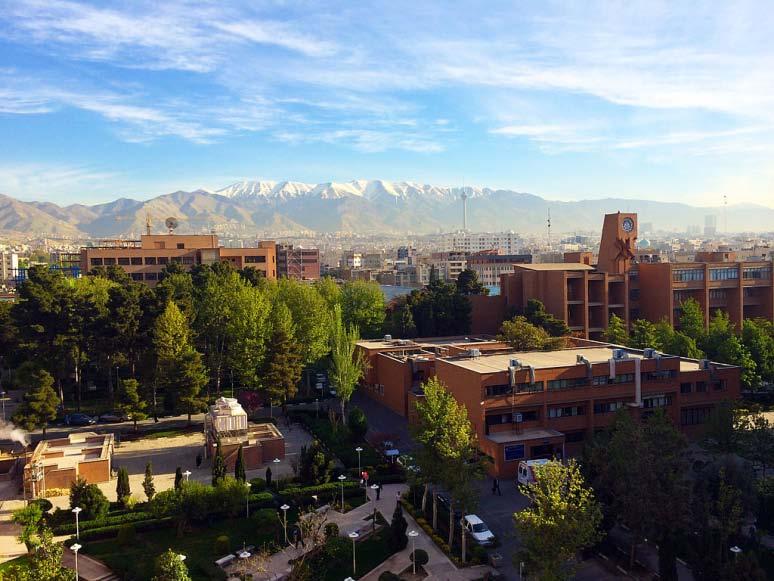
On March 12, 2016 the Cooperation Protocol between ICRANet and the Sharif University in Tehran, Iran, has been signed by the Director of ICRANet, Prof. Remo Ruffini, and by the President of the Sharif University of Technology, Prof. Mahmoud Fotouhi Firoozabad. This agreement has a duration of five years. The English version of this agreement. 
On March 22, 2016 the Memorandum of Understanding between ICRANet and the Shiraz University in Shiraz, Iran, has been signed by the Director of ICRANet, Prof. Remo Ruffini, and by the Chancellor of the Shiraz University, Prof. dr. Majeed Ershad-Langroodi. This agreement has a duration of five years. The English version of this agreement.
6. Public lecture of Prof. Ruffini in Ferrara
7. Forth Bego Rencontres - IRAP Ph.D. Erasmus Mundus school
May 30th - June 3rd, 2016 - Villa Ratti, Nice, France 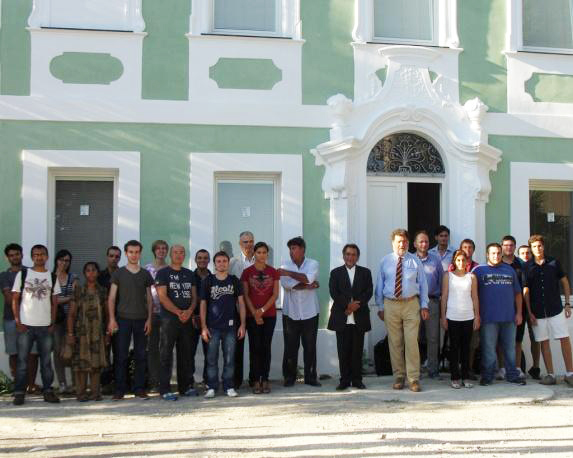
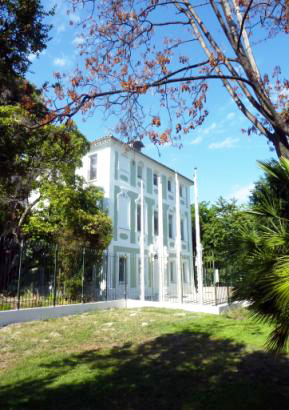
The school is dedicated to Roy Kerr in celebration of him being awarded the Crafoord Prize 2016. The school will take place at the ICRANet Seat in Villa Ratti, in Nice, where the IRAP-PhD is based. We recall that the IRAP-PhD is coordinated by ICRANet, involving various universities and research centres, and the diploma are jointly delivered by all the universities participating in the program: University of Bremen (Germany), University of Ferrara (Italy), University of Nice Sophia Antipolis (France), University of Oldenburg (Germany), University of Rome "La Sapienza" (Italy), University of Savoie (France). At the school distinguished scientists, such as Prof. Roy Kerr himself (which owns the Yevgeny Mikhajilovic Lifshitz ICRANet Chair), will present advanced seminars and the IRAP-PhD students will report advanced results of their PhD theses. The school is jointly organized between ICRANet and EMJD of the IRAP PhD, funded by the EACEA under the Erasmus Mundus framework program, Grant Number 2011-1640.
Directors:
Prof. Remo Ruffini - Prof. Pascal Chardonnet Faculty: Giovanni Amelino-Camelia, Ulisses Barres de Almeida, Elia Stefano Battistelli, Vladimir Belinski, Carlo Luciano Bianco, Donato Bini, Sandip Kumar Chakrabarti, Pascal Chardonnet, Christian Cherubini, Andreas Eckart, Thibault Damour, Jann Einasto, Sergio Frasca, Filippo Frontera, Jean-Marc Gambaudo, Paolo Giommi, Luis Herrera Cometta, Yipeng Jing, Roy Kerr, Hagen Kleinert, Michael Kramer, Jutta Kunz-Drolshagen, Luca Lamagna, Claus Lämmerzahl, Thierry Lanz, Olivier Legrand, Francois Mignard, Hermann Nicolai, Kjell Rosquist, Jorge Rueda, Remo Ruffini, Felix Ryde, Gregory Vereshchagin, She Sheng Xue, Shuangnan Zhang Secretariat IRAP PhD: ICRANet staff - Gildas Tchibozo Website
8. "Supernovae, Hypernovae and Binary Driven hyper novae" an Adriatic Meeting
20 to 30 of June, 2016, ICRANet headquarters in Pescara, Italy 
Meeting rationale The scientific meeting will take place at the ICRANet headquarters in Pescara, Italy, from 20 to 30 of June, 2016. The meeting will cover observational activities in the X, gamma ray astronomy, ultra-high energy cosmic rays (UHECR), as well as theoretical progress in the relativistic astrophysics of neutron stars, black holes, and gravitational collapse and their role in type Ib/c supernovae, hypernovae, binary-driven hypernovae, and their association with gamma-ray bursts. The meeting will also cover theoretical and observational aspects on the progenitor systems, population synthesis analyses, and the occurrence rates of such events. The different scenarios for type Ia supernovae and the role of white dwarfs in the single-degenerate, the core-degenerate and double-degenerate scenarios will be also discussed. International Organizing Committee Aharonian, F. (DIAS, Ireland) Arguelles, C. (Universidad Nacional de La Plata and CONICET, Argentina) Belczynski, K. (University of Warsaw, Poland) Chang, Jin (Purple Mountain Observatory, China) Della Valle, M. (Capodimonte Observatory, Italy) Frontera, F. (University of Ferrara, Italy) Fryer, C. (Los Alamos National Laboratory, USA) Garcia-Berro, E. (Universitat Politècnica de Catalunya, Spain) Giommi, P. (ASI, Italy) Gionti, G. (Vatican Observatory, Italy) Jing, Yipeng (Shanghai Jiaotong University, China) Jones, S. (Heidelberg Institute for Theoretical Studies, Germany) Kepler, S. O. (UFRGS, Brazil) Kerr, R. (ICRANet, New Zealand) Kunz-Drolshagen, J. (University of Oldenburg, Germany) Laemmerzahl, K. (University of Bremen, Germany) Marrocchesi, P.S. (University of Siena, Italy) Mathews, G. (Notre Damme University, USA) Mavromatos, N. (King’s College London, UK) Mirzoyan, R. (Max Planck Institute for Physics, Germany) Nuñez, L. A. (Universidad Industrial de Santander, Colombia) Penacchioni, A. (University of Siena, Italy) Rueda, J. A. (ICRANet, Italy) Ruffini, R. (Chair, ICRANet, Italy) Sahakyan, N. (ICRANet-Yerevan, Armenia) Tauris, T. (Astronomical Institute, University of Bonn, Germany) Treves, A. (University of Insubria, Italy) Yuan, Yefei (USTC, Hofei, China) Wiggins, B. (Los Alamos National Laboratory, USA) Wu, Xuebing (Peking University, China) Zhang, Shuannan (IHEP, China) Local Organizing Committee Belinski, V. (ICRANet, Italy) Bianco, C. L. (ICRANet, Italy) Muccino, M. (University of Rome "Sapienza", Italy) Pisani, G. (University of Rome "Sapienza", Italy) Rueda, J. A. (ICRANet, Italy) Ruffini, R. (Chair, ICRANet, Italy) Vereshchagin, G. (ICRANet, Italy) Xue, S.-S. (ICRANet, Italy) Registration deadline: May 15, 2016 Registration fee: 200 euro Contact: secretariat@icranet.org Website: http://www.icranet.org/am
9. ICRANet YouTube channel
10. Recent publications
Ruffini, R.; Vereshchagin, G. V.; Xue, S.-S., "Cosmic absorption of ultra high energy particles", Astrophysics and Space Science, Volume 361, article id. #82, (2016) 11 pp.
11. New Ph.D Thesis discussion and Diploma
Fernanda Gomes Oliveira, "X, gamma-ray and gravitational wave emission from short and long GRBs and their detection rates", defended on 24th February, 2016 at the University of Rome Sapienza.
Commission members: Roberto Capuzzo Dolcetta (Sapienza University of Rome, Italy), Massimo Della Valle (Osservatorio Astronomico di Capodimonte, Italy), Jose Carlos Neves de Araujo (Instituto Nacional de Pesquisas Espaciais, Brazil)
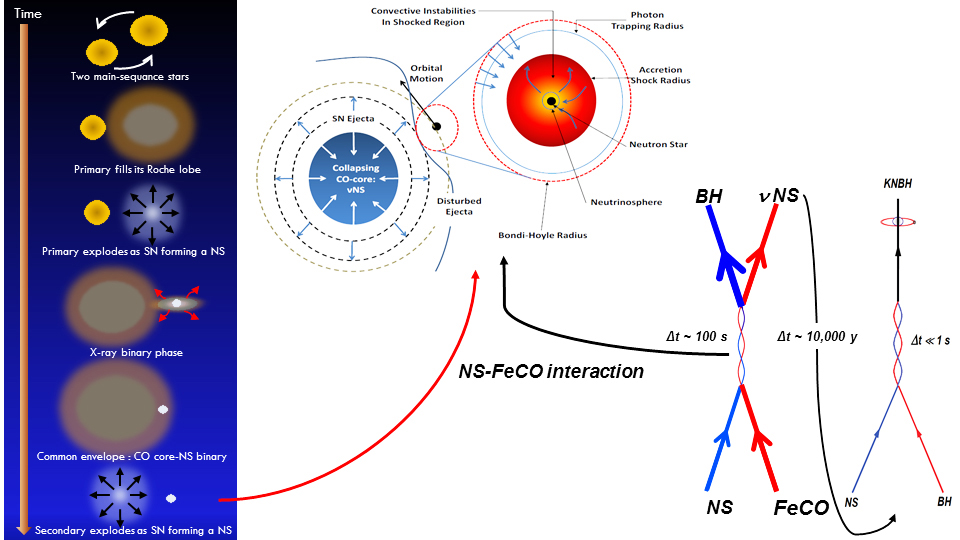
Besides the above astrophysical significance extracted from the X and gamma-ray observations of gamma-ray bursts (GRBs), coalescing NS-NS and NS-BH binaries are, in principle, promising astrophysical sources to produce gravitational wave (GW) signals detectable by the second generation of interferometric detectors, e.g. advanced LIGO (aLIGO). This thesis describes the final stages of evolution of a compact binary system as follows: (a) NS-NS and NS-BH binaries shrink their orbits via GW emission until the point of contact and merger; (b) formation of post-merger object and; (c) consequent emission of a short GRB. It is computed the GW emission in the spiraling-in phase of the binary system up to the merger, and a comparison between the classic nonrelativistic test-mass limit approximation and the relativistic approximation using the effective-one-body (EOB) formalism is made. The fate of the post-merger object from a NS-NS merger, namely massive NS or BH formation, on the basis of baryon mass and angular momentum conservation and evaluating the stability of the post-merger core with respect to the mass-shedding and the secular axisymmetric instabilities. A classification of short GRBs depending on the outcome of the NS-NS mergers is presented and an analysis of the cases of GRB 090227B, GRB 140619B and GRB 090510 is also shown. It is computed the expected baryon load from NS-NS mergers as the baryonic matter coming from the outer layers of the NSs and that is ejected during the coalescence process. The formation scenario for NS-BH binary systems based on binary-driven hypernovae (BdHNe) following the induced gravitational collapse (IGC) paradigm is presented. This thesis advances the possibility of producing a new class of GRBs, ultrashort GRBs, from the merger of such NS-BH binaries. It is presented the rate of occurrence of the different sub-classes of GRBs according with observational and theoretical properties. The thesis concludes with an estimate of the detectability by aLIGO of the GW emission of NS-NS and NS-BH binaries progenitors of GRBs and finally their GW detection rates. The figure illustrates the scenario for the NS-BH binaries produced by BdHNe.
List of publications: 1. R. Ruffini, J. A. Rueda, M. Muccino and et. al, "On the rate and on the gravitational wave emission of short and long GRBs", submitted to Phys. Rev. Lett., 2016. 2. R. Ruffini, J. A. Rueda, M. Muccino and et. al, "On the rate and nature of short and long GRB“, submitted to ApJ, 2015. 3. F. G. Oliveira, J. A. Rueda, R. Ruffini, "Gravitational Waves versus X-Ray and Gamma-Ray Emission in a Short Gamma-Ray Burst", ApJ, 787:150, 2014. DOI: 10.1088/0004-637X/787/2/150. 4. R. Ruffini, M. Muccino, M. Kovacevic, F. G. Oliveira, J. A. Rueda, C. L. Bianco, M. Enderli, A. V. Penacchioni, G. B. Pisani, Y. Wang, and E. Zaninoni, "GRB 140619B: a short GRB from a binary neutron stars merger leading to the black hole formation", ApJ,808:2 2015. 5. C. L. Fryer, F. G. Oliveira, J. A. Rueda, and R. Ruffini, On the Neutron Star-Black Hole Binaries Produced by Binary-driven Hypernovae, Phys. Rev. Lett., 115:231102; arXiv:1505.02809, 2015. 6. F. G. Oliveira, J. A. Rueda and R. Ruffini, "X, Gamma- rays and Gravitational Waves emission in a Short Gamma-ray Burst", Gravitational Wave Astrophysics, proceeding of the 3rd Session of the Sant Cugat Forum on Astrophysics, 2015. 7. Oliveira, F. G., J. A. Rueda and R. Ruffini, "Gravitational Waves Emission from the Short Gamma-Ray Burst 090227B", pp.390-392. Nonlinear phenomena in complex systems. An Interdisciplinary Journal, 17:4, 2014. 8. M. Muccino, R. Ruffini, M. Kovacevic, F. G. Oliveira, J. A. Rueda, C. L. Bianco, M. Enderli, A. V. Penacchioni, G. B. Pisani, Y. Wang, and E. Zaninoni, "GRB 140619B: a short GRB from a neutron star merger leading to the black hole formation", proceeding of Swift: 10 Years of Discovery, 2014. 9. L. Becerra, C. L. Bianco, F. Cipolletta, M. Enderli, C. L. Fryer and et. al., "Black holes, Neutrons Stars and Supernovae within the Induced Gravitational Collapse Paradigm for GRBs", Proceedings of the 2nd Cesar Lattes meeting, AIP Conference Proceedings, 2015. 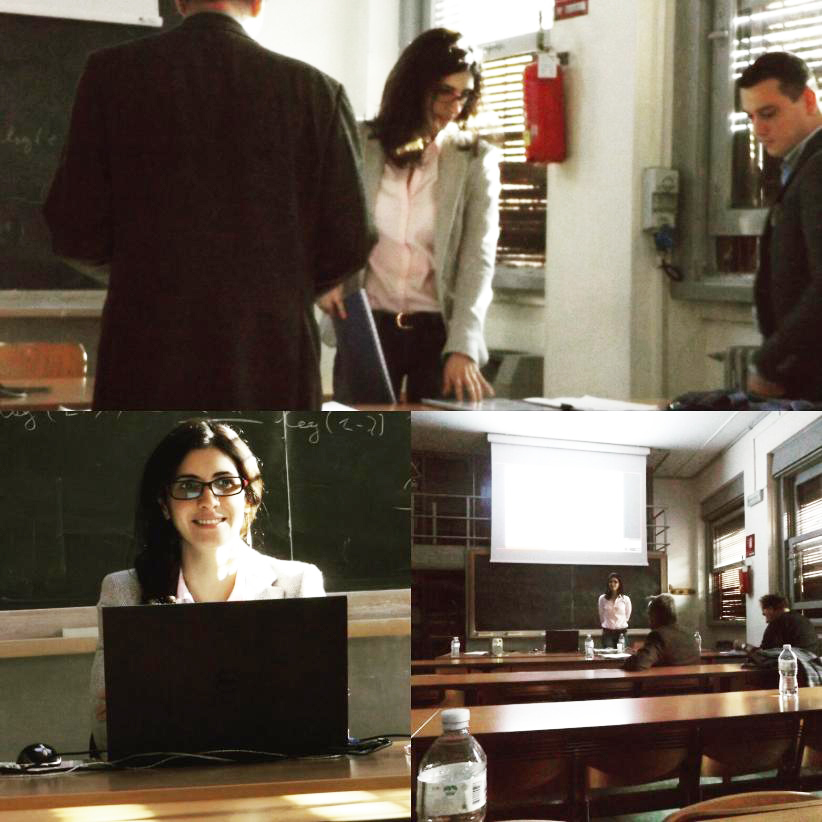
Federico Cipolletta, "Structure of rotating self-gravitating figures of equilibrium in Newtonian gravity and general relativity with an emphasis on neutron stars", defended on 22nd March, 2016 at the University of Rome Sapienza.
Commission members: Roberto Capuzzo Dolcetta (Sapienza University of Rome, Italy), Aldo Treves (Università degli Studi dell'Insubria, Italy), Volker Perlick (University of Bremen, Germany)
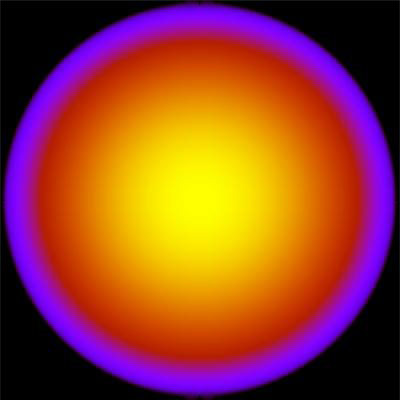
The thesis start introducing the problem of equilibrium of rotating stars from a classical point of view and the numerical methods to solve the equilibrium equations, focusing on the method developed by Eriguchi and Muller (1985) in the case of polytropic equation of state (EOS). The thesis present results of computations performed with a new code produced in the thesis, based on the above method, and in the case of uniform rotation there is a comparison of the code performance with the already known results in the literature. The code allows also the introduction of differential rotation and reproduces the results of Eriguchi and Muller. Results for a multi-parametric differential rotation law, where the angular velocity is a function of the distance from the axes of rotation (cylindrical radius) and of two free parameters, are also shown. The shape and structure of configurations as a function of the parameters are presented. Then, the thesis focus on the same equilibrium problem in general relativity and takes as an example the case of neutron stars (NSs). It is presented the method by Stergioulas and Friedmann and the results for rapidly rotating NSs, from computations performed with the public code RNS by Stergioulas are shown. The implications on both the internal structure of stars and exterior spacetime are presented. The mass, equatorial and polar radii, eccentricity, moment of inertia, and angular momentum are presented as a function of the central density and rotation angular velocity of the NS for a variety of modern EOS based on relativistic mean-field theory nuclear models. The limits of the stability, namely the Keplerian mass-shedding limit and the secular instability limit are computed. Fitting formulas for physical quantities of NSs such the binding energy and the maximum stable mass are presented. The mass quadrupole moment of a rapidly rotating NSs is also computed. The thesis ends with a study of the stable circular orbits of particles around rotating NSs and show fitting formulas for the binding energy and angular momentum of the last stable orbit, as well as a fitting formula for the minimum NS mass for which such a last stable orbit lies outside the NS surface. In the appendix it can be found the code in language C to build numerical models of rotating polytropic stars in Newtonian gravity, taking into account a two parameters differential rotation law. The figure illustrates the isodensity contours of a NS, taken from the Kaleidoscope section of Physical Review D, see http://journals.aps.org/prd/kaleidoscope/prd/92/2/023007.
List of publications: 1. Cipolletta, F.; Cherubini, C. ; Filippi, S.; Rueda, J. A.; Ruffini, R., "Fast rotating neutron stars with realistic nuclear matter equation of state", 2015, Phys. Rev. D, 023007, 92; 2. Becerra, L.; Cipolletta, F.; Fryer, Chris L.; Rueda, Jorge A.; Ruffini, Remo, "Angular Momentum Role in the Hypercritical Accretion of Binary-driven Hypernovae", 2015, ApJ, 100, 812; 3. Cipolletta, F.; Cherubini, C. ; Filippi, S.; Rueda, J. A.; Ruffini, R., "Fast Rotating Neutron Stars with Realistic Nuclear Matter Equation of State", Proceeding of the second Cesar-Lattes metting 2014; 4. Becerra, L.; Cipolletta, F.; Fryer, Chris L.; Rueda, Jorge A.; Ruffini, Remo, "Angular Momentum Transfer During the Hypercritical Accretion in Binary Driven Hypernovae", Proceeding of the second Cesar-Lattes metting 2014; 5. Cipolletta, F.; Cherubini, C. ; Filippi, S.; Rueda, J. A.; Ruffini, R., "Structure and Stability For Realistic Rapidly Rotating NS: Full GR Treatment", Proceeding of XIV Marcel Grossman metting 2015.
Hendrik Ludwig, "The Dynamics of Multi-Component Charged Fluids - Strong fields from heavy atoms to gravitational collapse", defended on 29th February, 2016 at the University of Rome "la Sapienza"
Commission members: Andrea Pelissetto (Sapienza University of Rome, Italy), Antonino Di Piazza (Max Planck Institute for Nuclear Physics), Karen Z. Hatsagortsyan (Max Planck Institute for Nuclear Physics)
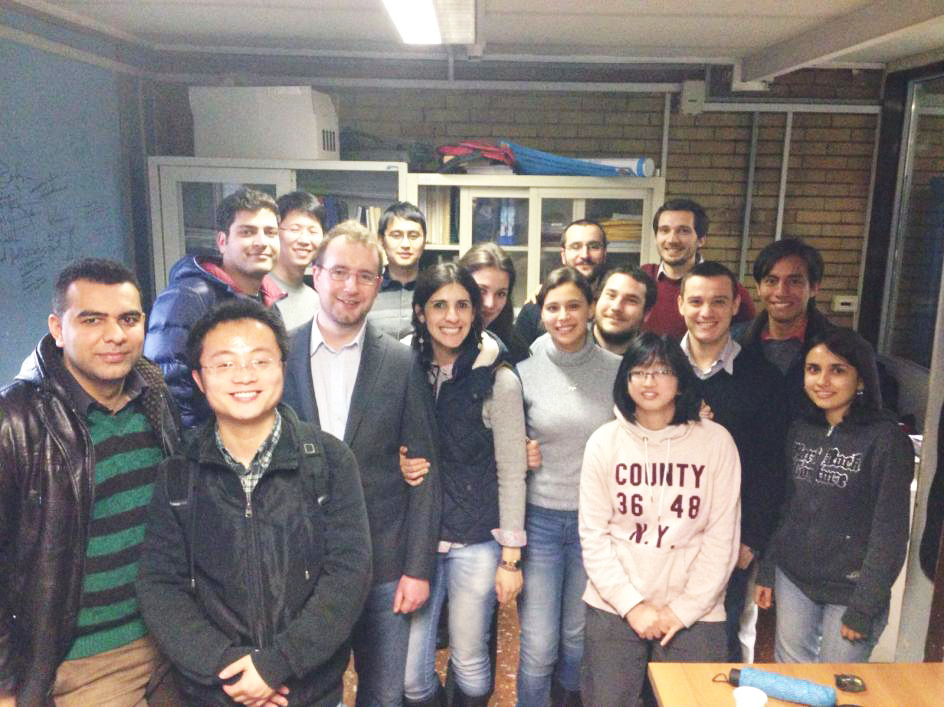
The thesis presents a study of electric pulsation modes of two-fluid systems: a positive charged fluid (proton and neutron fluid) and a negative charged fluid (electron fluid) at/above nuclear density. In the compressed heavy atom cases, the spectrum and eigenfunctions of electric pulsation modes are obtained, as well as other interesting properties such as an overcritical pulsating electric field. Part of these new and important results has already been published in Nucl. Phys. A.
It was then attempted to apply these results to the gravitational collapse processes to see if the pulsating electric field would be able to convert the gravitation energy to electromagnetic energy, which might account for Gamma Ray Bursts. In the on-oscillating case where the electric field is balanced by pressure gradients only, it was shown that the electric field does not reach critical levels during the gravitational collapse. Due to the great difficulties in numerical calculations involving the vast difference of gravitational collapse time scale and electromagnetic timescale (more than 20 orders of magnitude), a definite final result has not yet been achieved for the case involving oscillations. However, several cases and possibilities were studied to give the maximal and minimal values of electric fields which could develop in the gravitational collapse of a neutral stellar core, including an effective analytical treatment of oscillation to avoid the numerical complications. This gives an insight into this difficult problem for future studies, both numerical and analytical approaches. 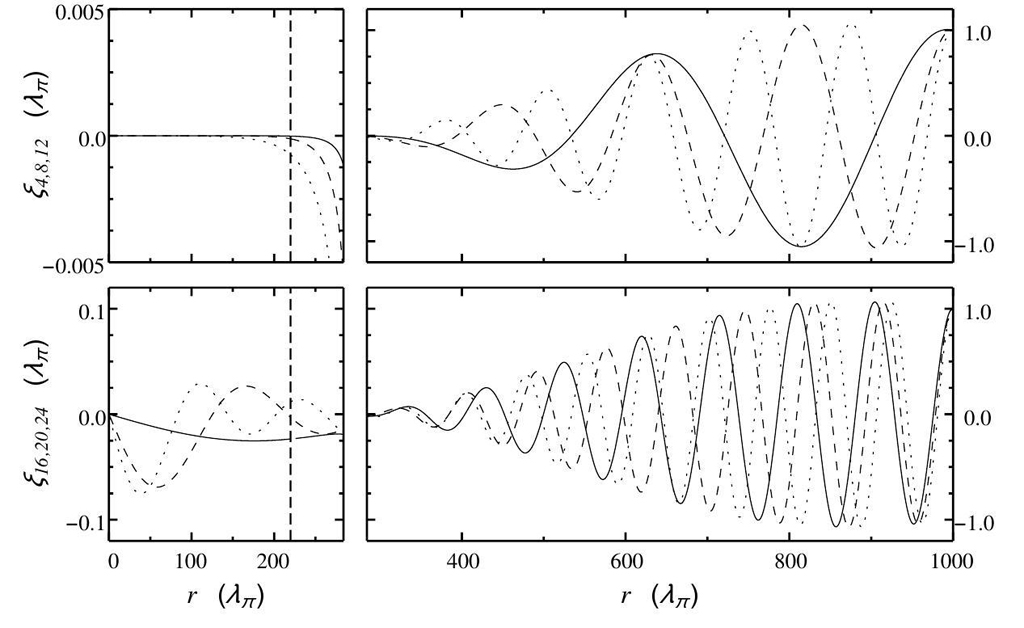
Figure: Electronic oscillation modes below (upper panels) and above (lower panels) the plasma frequency ωplas induced by the positive electric charge of the nucleus. Note that oscillations below ωplas do not penetrate the nucleus (upper left panel), while oscillations above the plasma frequency do penetrate the nucleus (lower left panel). List of publications: 1. H. Ludwig and R. Ruffini, "Gamow's calculation of the neutron star's critical mass revised," J. Korean Phys. Soc., vol. 65, p. 892, 2014. 2. H. Ludwig, R. Ruffini, and S.-S. Xue, "Nucleus Driven Electronic Pulsation," NPCS, vol. 17, p. 384, 2014. 3. H. Ludwig, R. Ruffini, and S.-S. Xue, "Electronic response to nuclear breathing mode," in Proceedings of the Second César Lattes Meeting (P. Chardonnet, U. Barres, and C. A. Z. Vasconcellos, eds.), 2015. 4. H. Ludwig, R. Ruffini, and S.-S. Xue, "Collective electronic pulsation around giant nuclei in the Thomas-Fermi model," Nuc. Phys. A, vol. 941, p. 1, 2015. 5. H. Ludwig, O. Minazzoli, and S. Capozziello, "Merging matter and geometry in the same Lagrangian," Phys. Lett. B, vol. 751, p. 576, 2015. |
|||||
|
||
